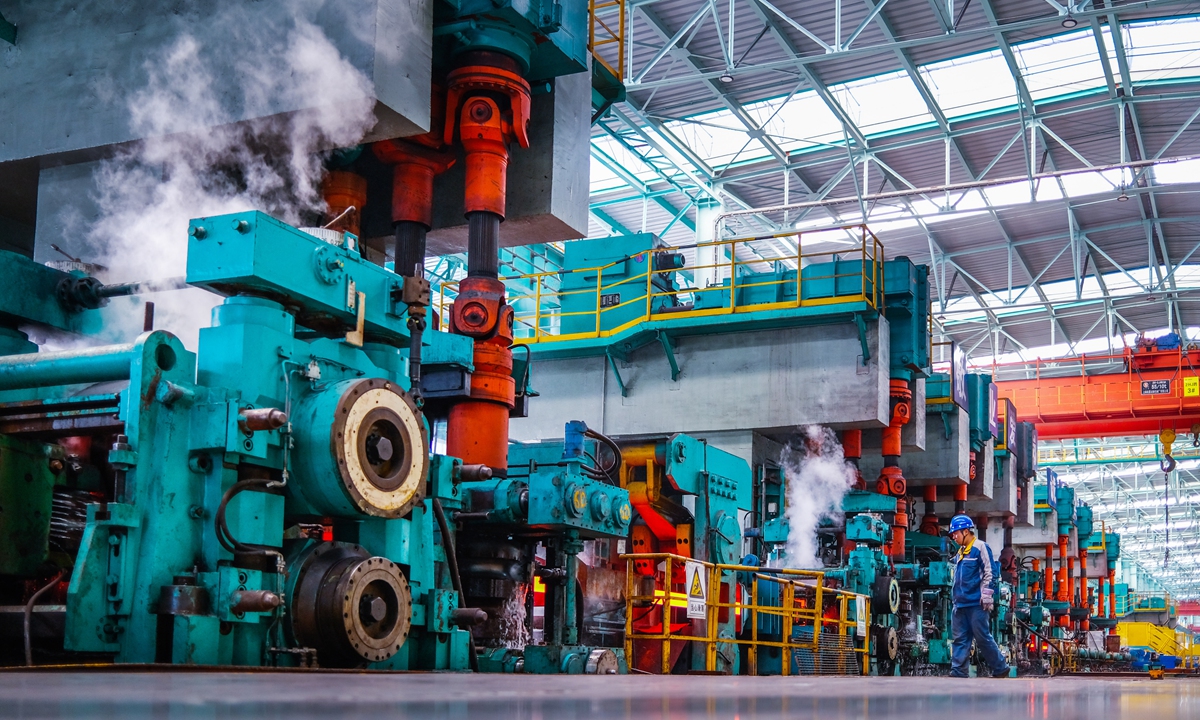
An alloy bar production line at a steel producer in Ma'anshan in East China's Anhui Province on November 11 Photos: cnsphoto
The price of screw-thread steel hit 4,910 yuan ($759.5) per ton on Wednesday, the highest since October 2011, after several provinces announced plans to limit steel production to reduce carbon emissions.
Since the start of the Spring Festival, Tangshan in North China's Hebei Province has been among those provinces.
Tangshan said that it will implement total volume controls on a pilot basis in the steel industry and gradually extend those controls to coking, cement, power and the foundry industry. The overall goal is to reduce emissions, including carbon emissions, by more than 40 percent from 2020 levels.
The production limits are in line with China's goal to reach a carbon dioxide emissions peak by 2030 and carbon neutrality by 2060, which are arduous tasks, said Xiao Yaqing, head of the Ministry of Industry and Information Technology on Monday, adding that this year, the steel industry should be a pioneer in carrying out the implementation.
China will further intensify efforts to reduce crude steel output and ensure that it declines year-on-year, according to Xiao.
"If steel companies in Tangshan aim to eliminate 40 percent of their carbon emissions, their annual steel capacity will decrease at least 50 million tons," Wang Guoqing, research director at the Beijing Lange Steel Information Research Center, told Global Times on Wednesday.
In 2020, Tangshan's crude steel output rose by 5.2 percent year-on-year to 144 million tons, according to open data.
Wang stressed that the steel industry has a positive outlook this year and prices may rise during the first half. But the goal of decreasing carbon emissions is a challenging mission.
Analysts said the market's supply-demand structure may be changed by the emissions requirements.
An insider of Jingye Group based in Hebei Province told the Global Times on Wednesday that British Steel, which it acquired in March last year, has made profits and produced steel worldwide, including in China, and it's able to meet market demand.
"Energy saving is another key task. Carbon dioxide emissions per ton of steel are falling, and coal consumption per ton of steel is also falling in China, with 545 kilograms of standard coal, while the world average is 575 kilograms," said Xiao.
China's coal output in 2020 reached 3.9 billion tons, up 1.4 percent year-on-year. By the end of the 14th Five-Year Plan period (2021-25), annual domestic coal production will be capped at 4.1 billion tons, and annual coal consumption will be capped at about 4.2 billion tons, according to a report published by the China National Coal Association on Wednesday.
Hu Zhenyun, energy department director of Tangshan-based Delong Steel, told the Global Times that at the end of 2015, it took 600 kilograms of standard coal to produce one ton of billet. That fell to 480 kilograms at the end of 2019, less than China's average.
"It means that carbon emissions reduction is reaching a bottleneck, because the nation's latest production techniques to rectify emissions are not mature," said Hu.
Wang predicted that the strategy to reduce the carbon emissions of the steel industry will be enhanced during the 2021 two sessions, but the key problem is to resolve the contradiction between market supply and demand.



